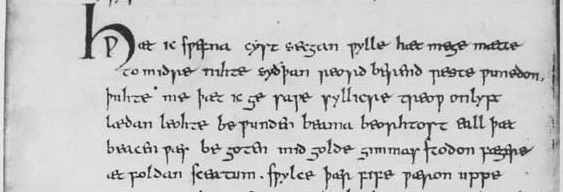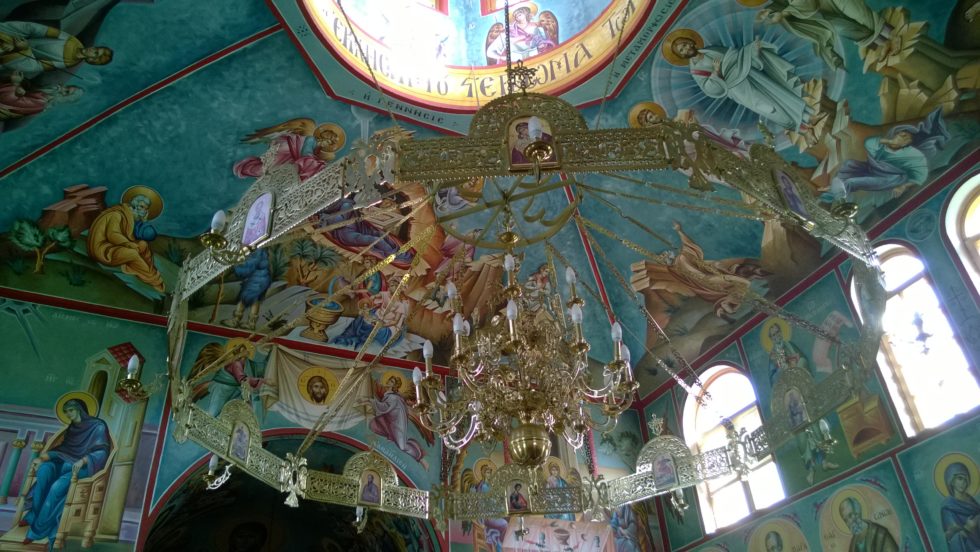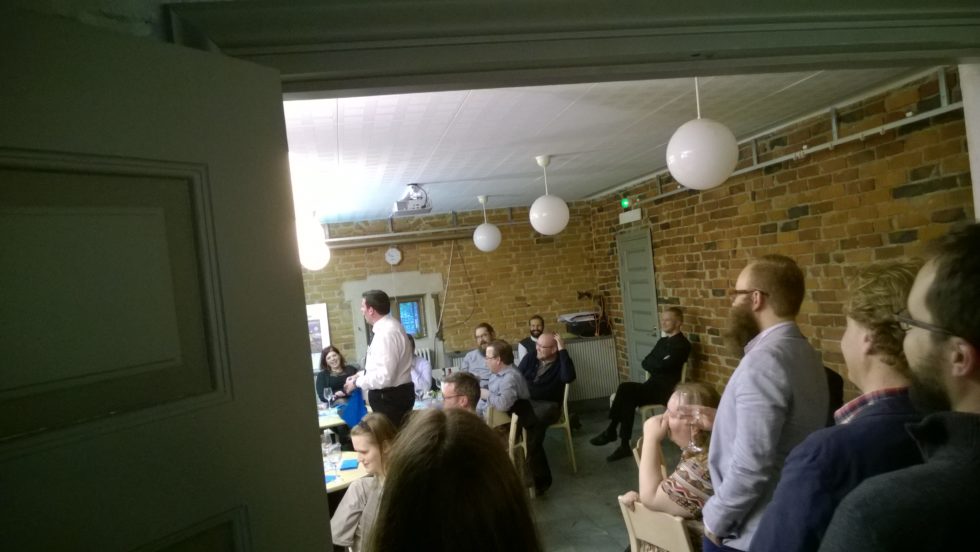(This is part 3 of the series. Read the previous parts here: 1, 2) A very early sketch of the music How It’s Made There are few things more intimidating to an artist than the blank canvas or the empty page. Many times I have been asked, “How do you write music?” as if the process was some ...
2 – A Dialogue with the Cross of Christ
(This is part 2 of the series. Read the previous part here: 1) Ruthwell Cross, inscribed with parts of the "Rood" poem. Origins The Old English poem, the “Dream of the Rood” is fascinating on many levels. The author of the poem is anonymous, though there are a few educated guesses as to their identity. The text ...
1 – The Road to the Rood

The opening lines of the "Rood" from the Vercelli manuscript Modern Heretics Like many things, my setting of the Anglo-Saxon poem, the “Dream of the Rood”, began as part of a long intellectual and spiritual journey. In my field of modern and experimental art music, every composer is searching for a unique voice, a signature in ...
Gazing East, Part III

Previous entries in the series here: Gazing East, Part I Gazing East, Part II Eyes to See, Ears to Hear Our very first night and once again before the end of the week, we attended a Vespers service together in a tiny, beautiful church located on the grounds of the orthodox theological seminary attached to the university. From the ...
Gazing East, Part II

Previous entries in series: Gazing East, Part I The Magnificently Multivarious Individual At meals, before and after the singing, we would find time to discuss amongst ourselves matters and truth and identity both profound and mundane. Everyone had an intense cultural curiosity, asking about language, geography, history, musical cultural, and any number of other things. The differences here ...
Gazing East, Part I

My Cup Runneth Over One week in Finland at a conference on the music and hymnography of the Orthodox Church is far too little, either for the loveliness of the lakes and forests or for the ancient and variegated beauty of the traditions of the Eastern Church. As part of my personal project to process the ...
Weekend Links
Interesting reading from over the weekend: Stephen Milliken writes in The Craftsman and Her Environment. Stephen is an old friend and has very interesting views on the relationship between material, tactile work (with the hands), and fulfillment. Highly recommended! Scott Alexander writes at the Slate Star Codex about The Parable of the Talents. Scott, in his usual ...
Myopia Sermon Series

This past Sunday I finished teaching a three-week series at Church on Tap, titled "Myopia: Spiritual Nearsightedness and the Health of the Church." The series was based on ideas from a paper I presented last year at a conference at Houghton College and subsequently developed further in recent months. In Part I, I lay out my ...
The Romance of the Impossible
My presentation of my paper, "The Romance of the Impossible and the Reality of Transcendence" at the CFAMC conference last October at Biola University is finally up! The paper is basically a view from 20,000 feet of my thoughts on the intersection of Christianity, aesthetics, and culture. I shared the floor here with Calvin College ...
Truth Without Beauty
There is in the church a certain saying, “the Bible speaks for itself.” It implies perhaps two things: that we cannot add anything to the presentation of the Word, and that we shouldn’t add anything to the presentation of the Word. In discussions on the nature of reading and teaching from Scripture, I have often ...
FOLLOW ME